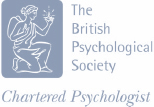Latest Videos | Latest Articles
1. What is PTSD?
When facing danger, it is normal to feel fear and it is healthy to experience physical arousal. Dangerous situations trigger a “fight-or-flight” response that activates the production of adrenaline and this reaction helps us to respond to potential harm. However, in people who experience PTSD the “fight-or-flight” mode may be constantly activated, resulting in increased, stress, fear and physical arousal even when there is no danger around. The main characteristic of people with PTSD is that they have experienced or witnessed traumatic incidents, such as physical or sexual assault, torture, kidnapping, war, car accidents, earthquakes or other natural disasters.
2. Causes, signs and symptoms
Researchers suggest that there is a genetic predisposition to create more negative memories, and this sets the stage for PTSD to develop. However, environmental factors, like serious traumas are needed for PTSD to occur. Personality traits, such as neuroticism play an important role for PTSD development as well. For example, people who tend to see things in a negative and pessimistic way, are more prone to develop PTSD than those with a positive outlook. It has also been suggested that openness and extrovert personality traits play a positive role in the recovery from PTSD. For instance, people who are open to share and discuss their negative experiences and who have access to social support are more likely to recover from PTSD.
Symptoms of PTSD are grouped into four categories:
Re-experiencing of the traumatic event. The person may have flashbacks, nightmares, frightening thoughts, repetitive memories or bad dreams about the event. Words, thoughts, objects or situations may re-trigger the same symptoms (e.g. physiological arousal) as when the traumatic event happened, for example darkness can remind a woman of being sexually assaulted if she was assaulted during nighttime. It is common that these symptoms interfere with everyday activities.
Avoidance of all the reminders associated with the event. There are external reminders (e.g. objects, situations, places) and internal reminders (e.g. thoughts, feelings). The person may stay away from these reminders because they re-trigger the feelings experienced during the time of the traumatic event. People who suffer with PTSD often experience feelings of numbness, guilt, and depression. The also report losing interest in private and social leisure activities.
Mood and cognition change after the traumatic experiences. The person may experience negative emotions and cognitions, self-blaming, and an inability to remember certain aspects of the trauma. The person may also feel detached from reality (i.e. de-realization) or experience an out-of-body feeling (i.e. de-personalization).
Increased arousal and reactivity symptoms are also commonly experienced after the trauma. These include experiencing hyper-vigilance, tension, difficulties sleeping, increased irritability and aggression and recklessness and sudden emotional outbursts.
3. Diagnosis
Everyone who has PTSD must have witnessed or experienced a trauma. However, not everyone who has witnessed or experienced a trauma develops PTSD. Symptoms commonly emerge within 3 months of the incident, but they may also emerge even after years without symptoms. Mental health professionals like psychologists or psychiatrists can diagnose someone with PTSD. In order to be diagnosed, the person has to have at least 1 of the above re-experiencing symptom, at least 2 of the arousal symptoms, at least 3 of the avoidance symptoms, and 3 of the mood and cognition alteration symptoms. Usually, PTSD is accompanied by depression, anxiety disorders or substance abuse disorder. People who experience PTSD find it difficult to engage with typical daily activities, such as going to school, work or going shopping.
4. PTSD Treatment
PTSD is generally treated with psychotherapy, medication or both. The choice of treatment depends on the severity of the disorder. According to the National Institute for Health Care Excellence (NICE) the recommended psychotherapy is Cognitive Behavioural Therapy (CBT). This type of therapy focuses on the connection between thoughts, emotions, and behaviours; and teaches the person new ways of thinking and behaving that may help to reduce self-blaming thoughts and feelings of guilt and shame, as well as learning to cope with avoidance and re-triggering experiences.
Another treatment used is Exposure Therapy. Here the therapist and client together develop an anxiety hierarchy (from the least intense to the most intense) of the client’s fears, and the client is then gradually exposed to their fears in a controlled and supportive environment. The goal of this approach is to extinguish the fear response and help the client cope with the anxiety triggered by the reminders. Some of the symptoms of PTSD can also be addressed through the use of medication and your GP will be able to provide you with guidance on what medication to take. At present three types of medications are commonly used to treat PTSD – antidepressants, mood stabilizers and anti-psychotic medications. Some of these medications start working immediately whilst others take several weeks to start working. Common to all medication is that it may cause side effects and some medication should not be taken for prolonged periods of time.
How to breathe better
You’d probably be surprised if I told you that you’re not breathing optimally. What if I told you that learning to relax and take a...Read More »










